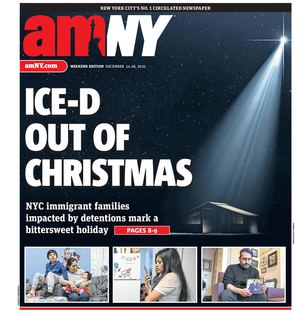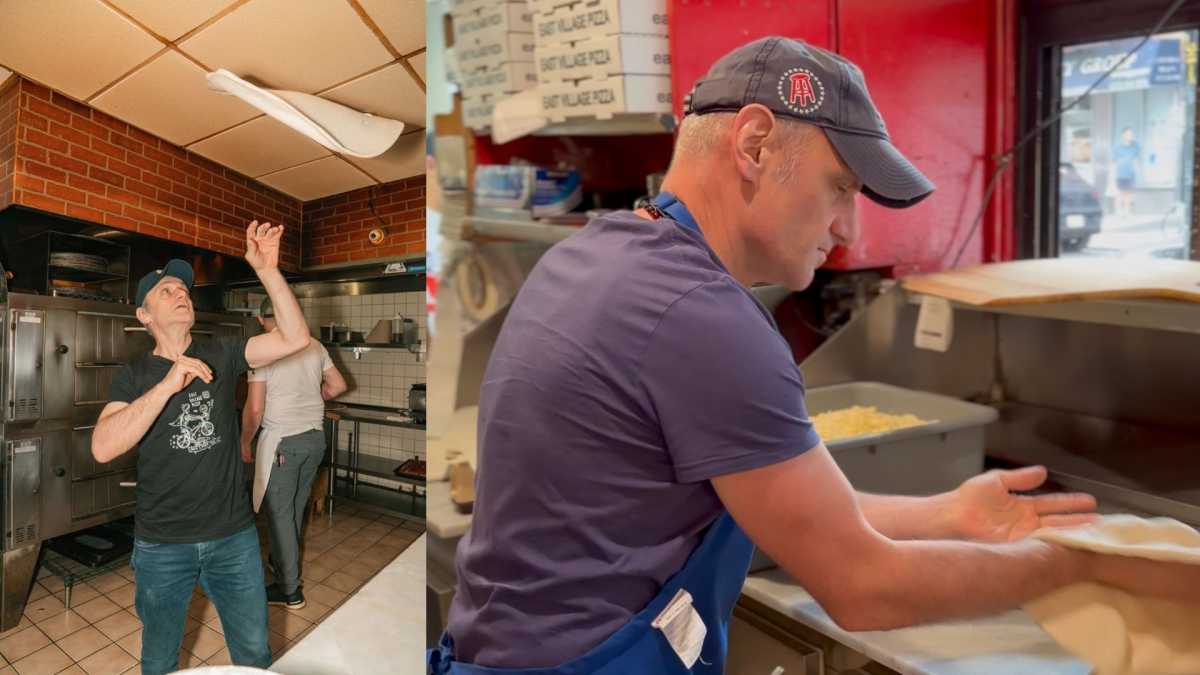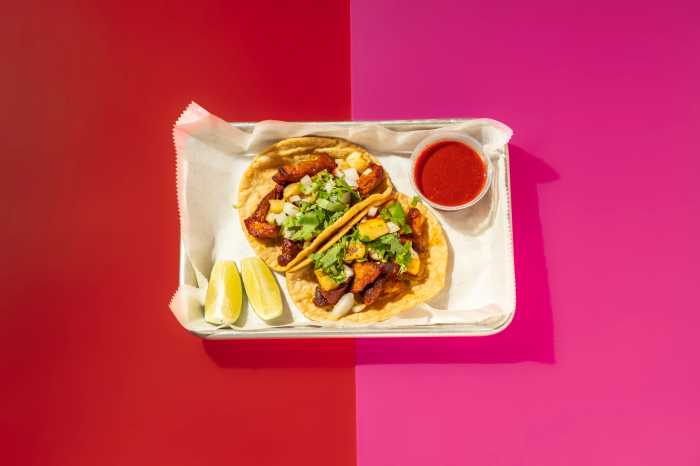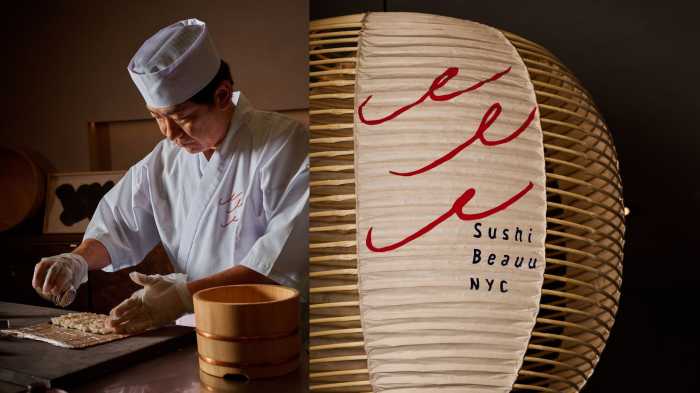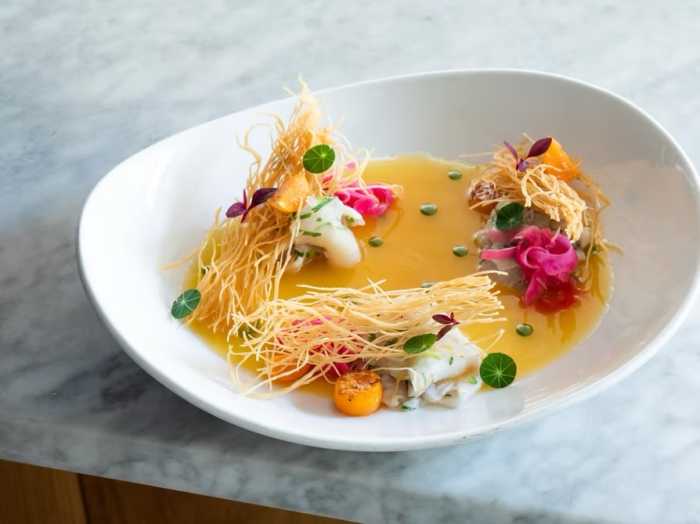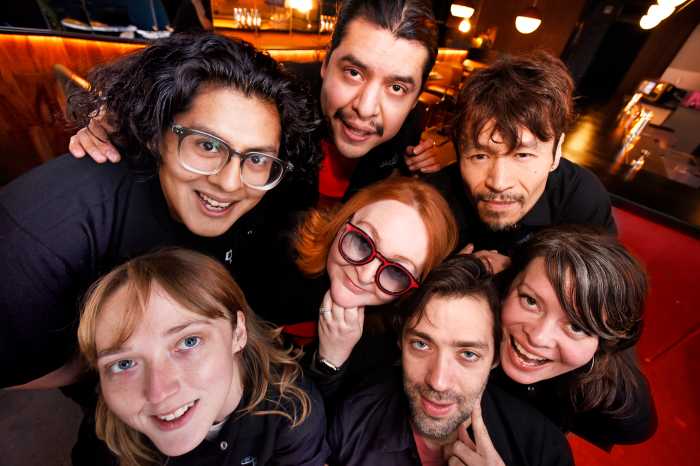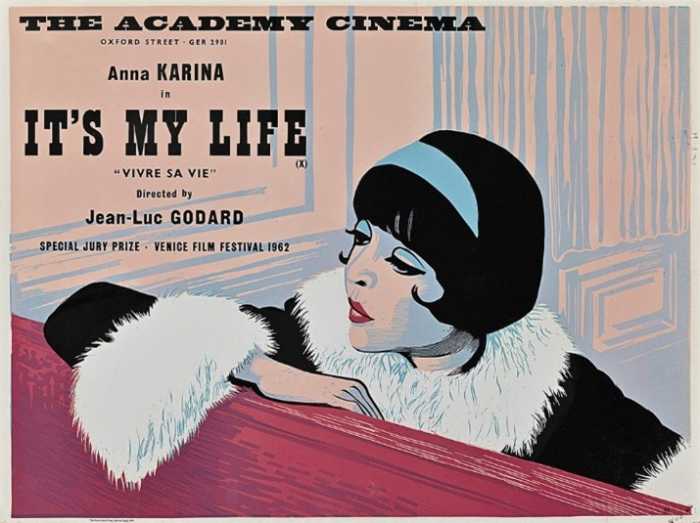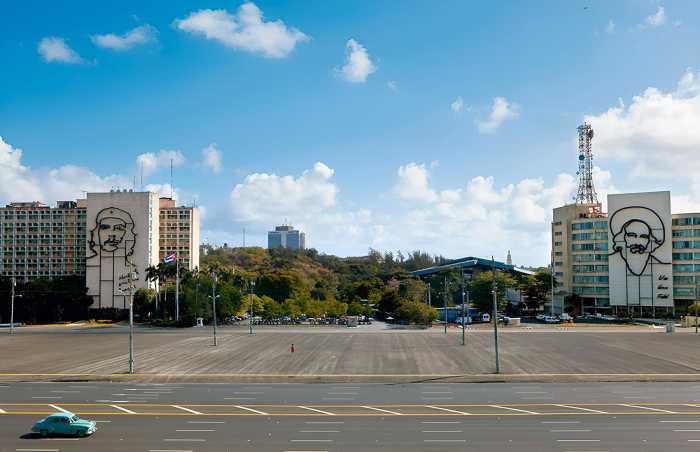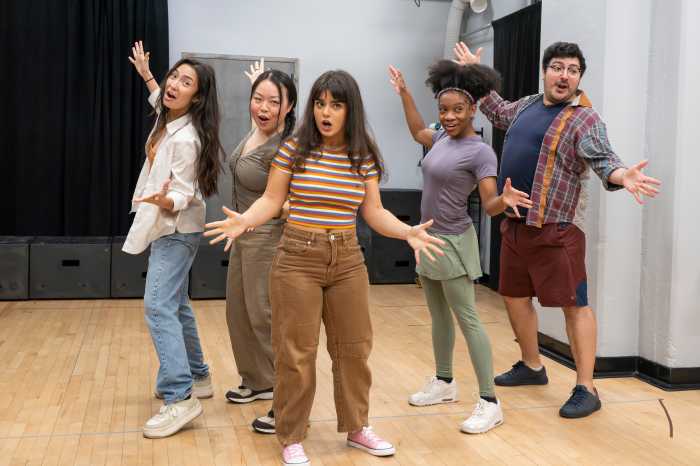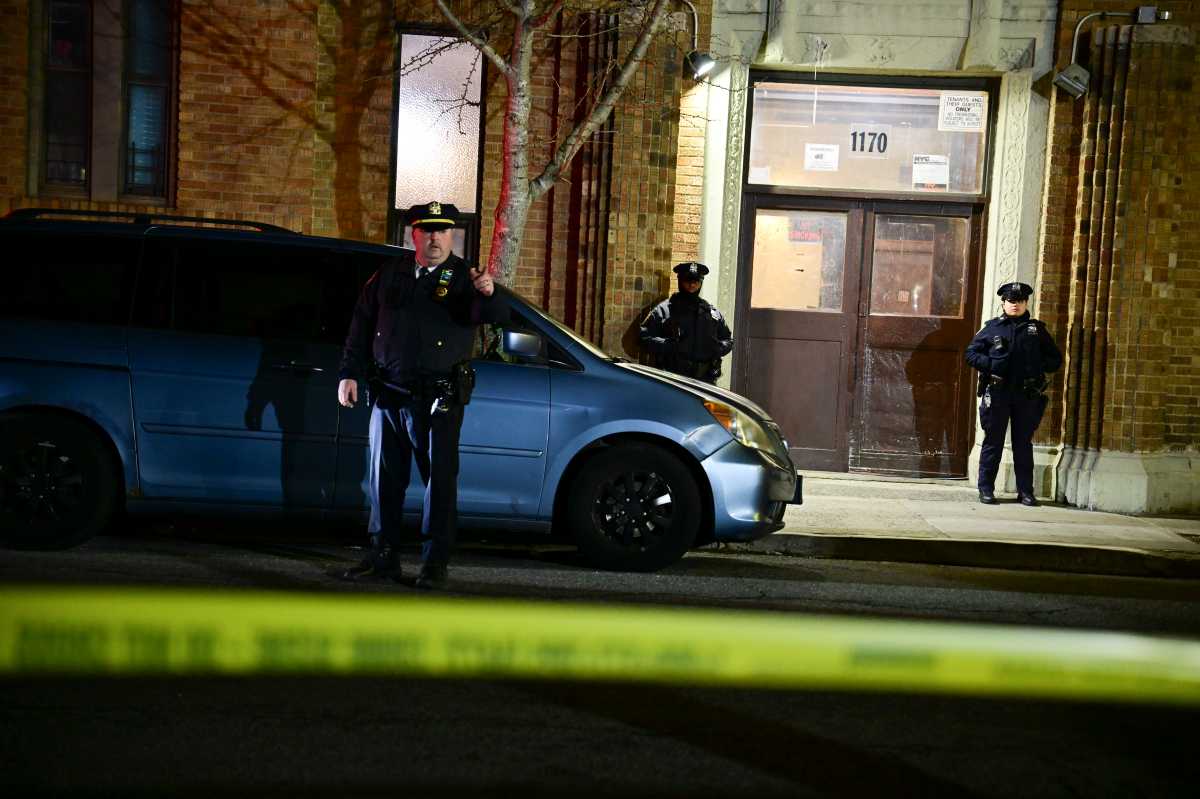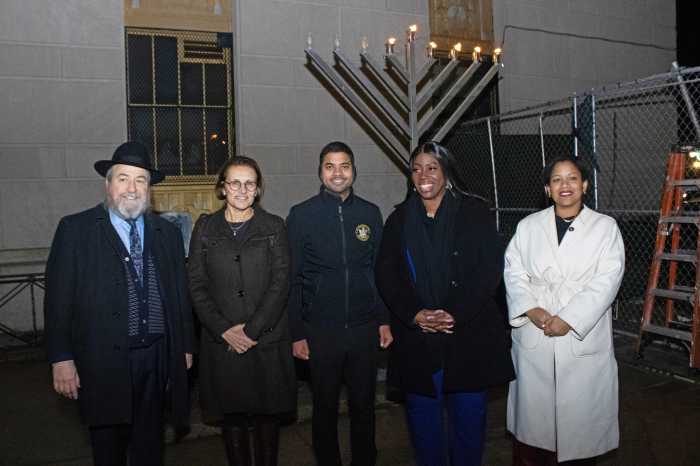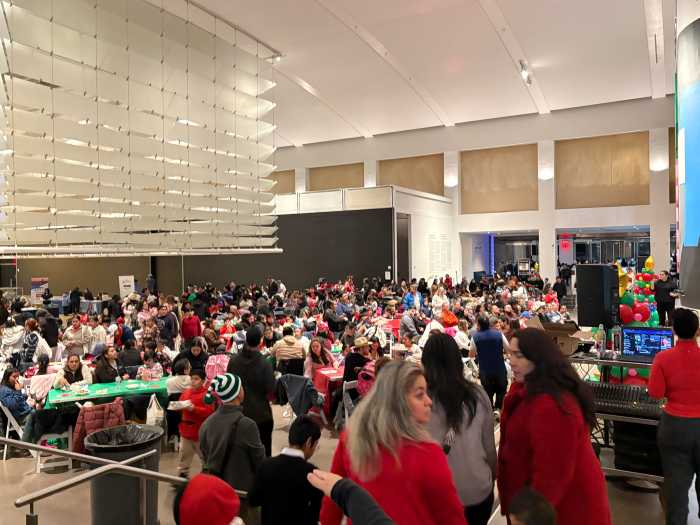Frank Kabatas could never afford pizza before he walked into East Village Pizza in 1997, the day after he immigrated from Turkey. Now, he owns the restaurant, delighting New Yorkers and his 1.7 million Instagram followers with his consistent yet creative slices.
“Everything that I’ve done so far, it has changed my comfort zone,” Kabatas said. “I never had pizza in my life before East Village Pizza — I had a lot of firsts here.”
Kabatas followed his brother to New York, where he got his first job at East Village Pizza. He worked on whatever they needed, from dishwashing to delivering pies on a manual bicycle, while attending Long Island University in Brooklyn to improve his English.
“When I got here as an immigrant, I had to work to survive,” Kabatas said. “And I knew one thing: that I had to go to school to learn English because my English wasn’t that good.”
But Kabatas was fired only six months into his employment, prompting him to search “desperately” for another job, he said. He found work at Ben’s Pizzeria in Greenwich Village, which taught him how to make delicious pies for the first time. After a year-and-a-half there, he moved to a Long Island Domino’s, where he learned the secrets of marketing.
“It seems like it was easy, but it wasn’t easy,” Kabatas said. “I worked 17 hours a day. I got four or five hours to sleep for about three, four years.”
In 2003, armed with pizza-making and marketing skills from his two jobs, Kabatas saw that East Village Pizza was for sale. So he bought it.
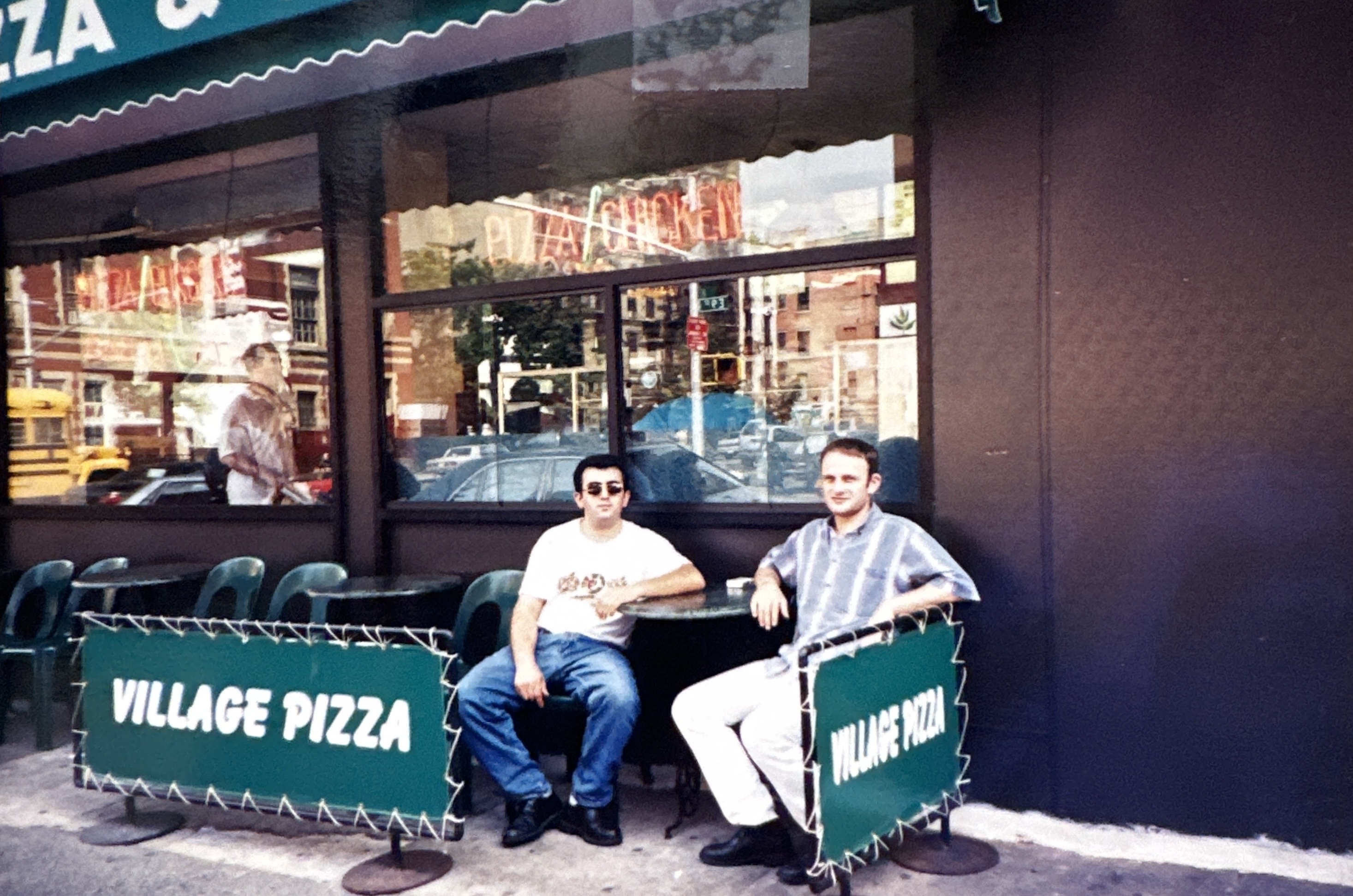
Passion in pizza
East Village Pizza, on the corner of First Avenue and Ninth Street, was founded in the same year Kabatas ate his first slice there, struggling against the competitive market to establish itself as a quintessential part of New York’s “iconic pizza culture,” as its website advertises.
When Kabatas took over the pizzeria, he immediately made it his own, embedding his love for customers, pizza and service into his store.
“After I bought the store. I changed everything,” Kabatas said. “Every single ingredient is my own. I improve it every single day. There is a passion behind it.”
Since he bought the store in 2003, Kabatas has come into work almost every single day, refining his recipes, flavors and brand.
“The main idea of what makes this fresh pizza, and what shows that it is fresh pizza, is a passion behind it for about 27 years,” Kabatas said. “Almost every single day I come here, unless I’m on vacation or there’s some emergency. It’s like my kid.”
But even as East Village Pizza grew under Kabatas’ ownership, he was forced to adapt his own practices, he said.
“When I bought the store, I knew how to make pizza, I knew the marketing a little bit, but I never ran a store in my life before,” Kabatas said. “I never knew what that was like. So that experience changed myself — changing my comfort zone was the hardest thing.”
Kabatas said his favorite thing about his pizzeria is that he is trying to constantly improve it.
“I never stop being passionate about what I can improve about the pizzeria,” Kabatas said. “If you come here next year, you’ll see something different.”
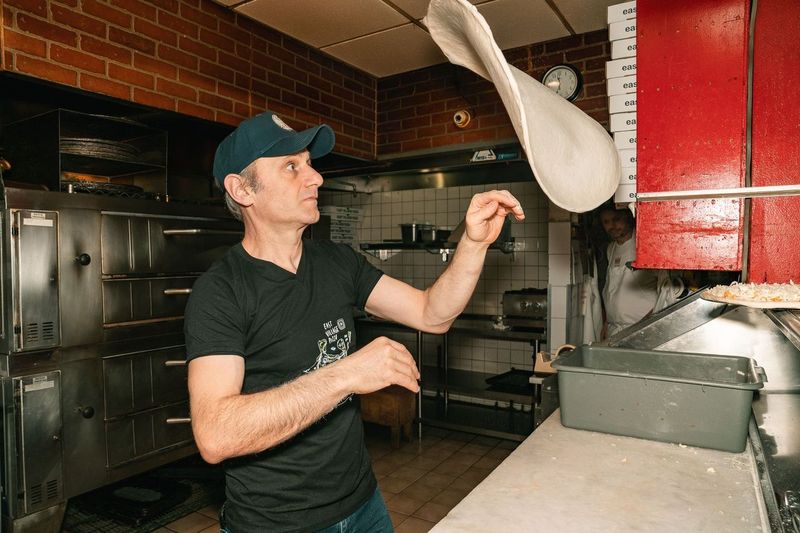
Growing a viral business
Kabatas first started putting East Village Pizza on social media in 2012, when he tried to show the city what made his pizzeria stand out from the ground. As short-form video content became more popular, Kabatas adapted his posts, helping the store go viral. During the Covid-19 pandemic, East Village Pizza hit one million followers on Instagram and now, the pizzeria is at 1.7 million.
For Kabatas, social media was a way to keep innovating and stay ahead of the competition. He live-streamed himself making pizzas for an hour each day, not for show, he said, but to demonstrate what went on behind the counter.
When Kabatas got the idea for his now-signature “double stack” pizza — which has two layers of dough with additional toppings in between — in 2019, he live-streamed it.
“It went well,” Kabatas said. “People actually liked it. It was something different.”
“I used to have a line right here,” he added, pointing out of the door. “It takes about 30 minutes and people liked it. It was viral all around the world.”
Double stack pizza helped popularize East Village Pizza, but Kabatas said he has always had locals who return for the pizzeria’s consistency.
“I don’t make the greatest pizza in the world, I don’t make the craziest pizza in the world, but I make good pizza that makes customers come back,” Kabatas said. “When they come here today, they’re gonna have pizza. They love it. When they come tomorrow, I make sure they love it again and again and again.”
Kabatas said that no pizzeria can make a claim to be the “best” pizza — but he can say that he cares about his pizza and his customers.
“There is no one in the world that actually is going to be able to make the ‘best pizza,’” Kabatas said. “But I make good pizza. I make simple, good pizza for the people to enjoy.”
For more information, visit eastvillagepizza.net.
Sophia Di Giovanni and Emily Davenport contributed to reporting.
